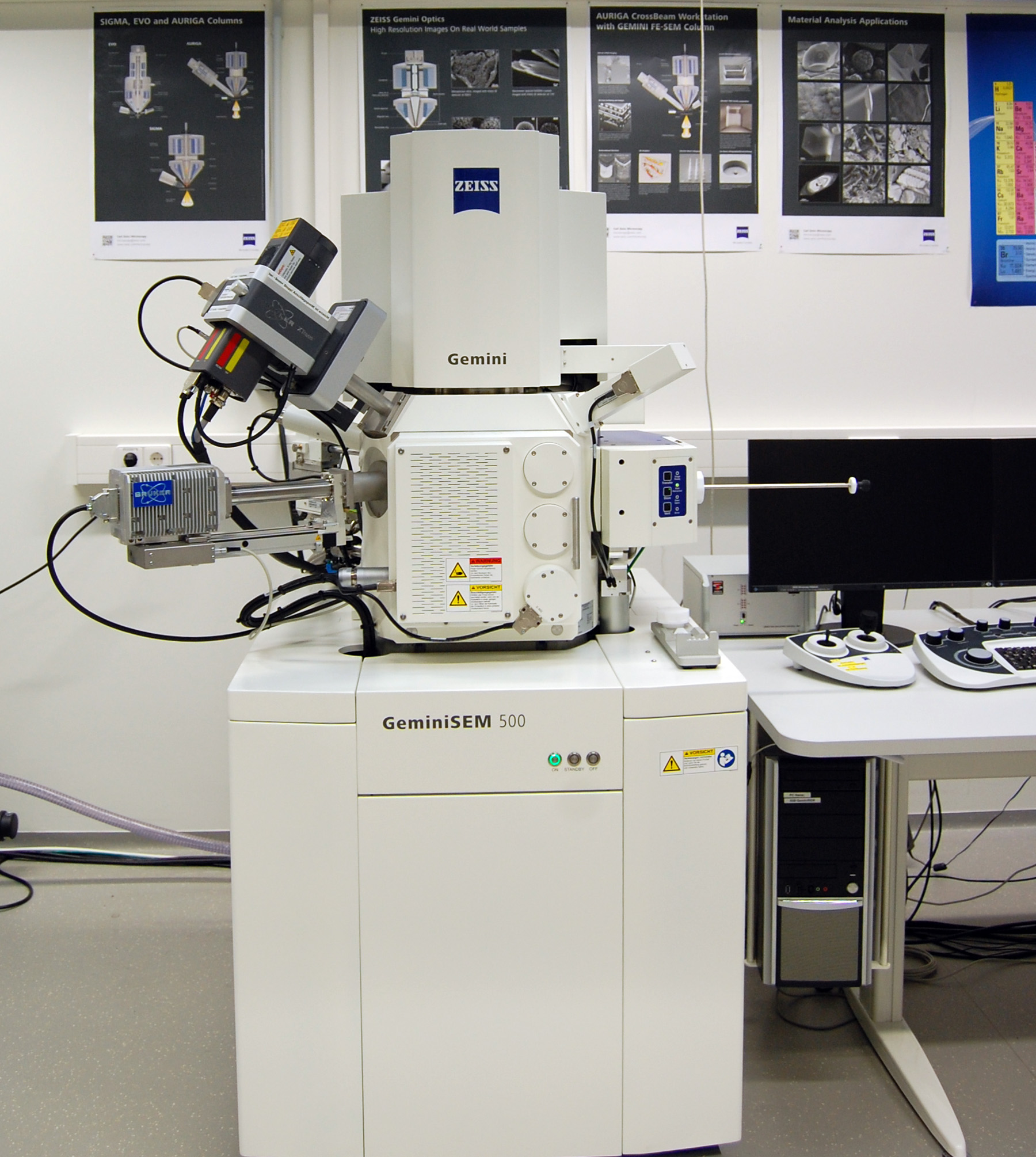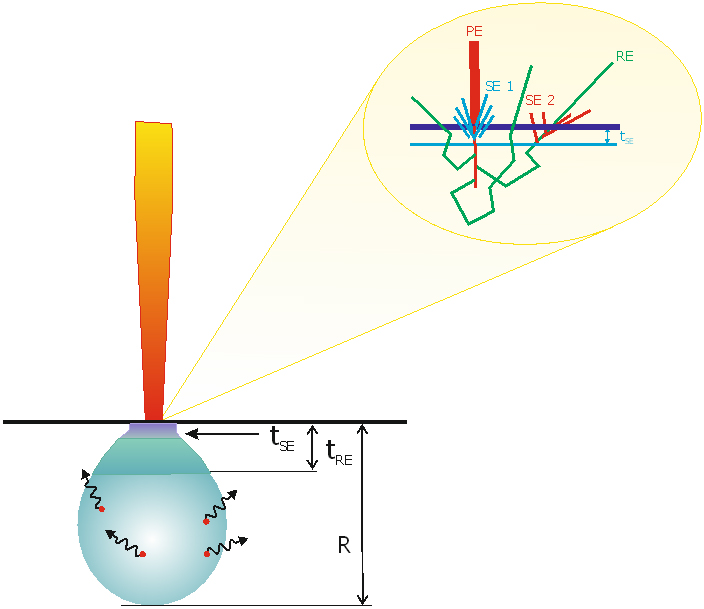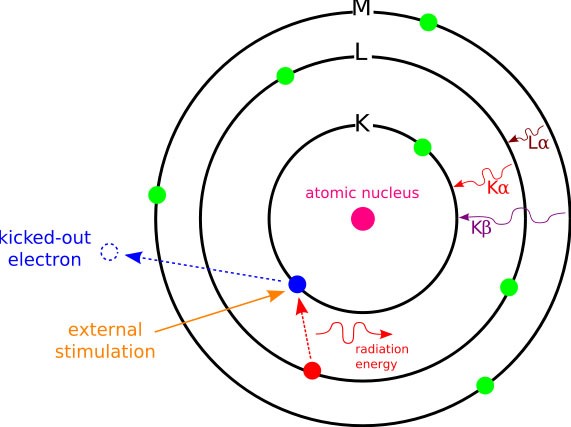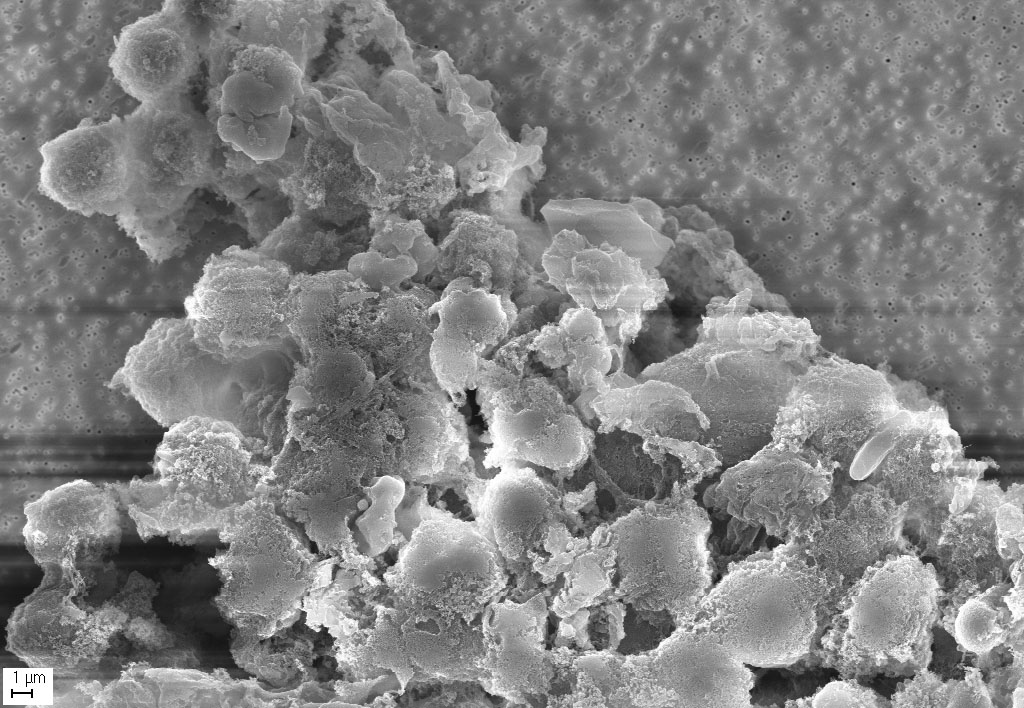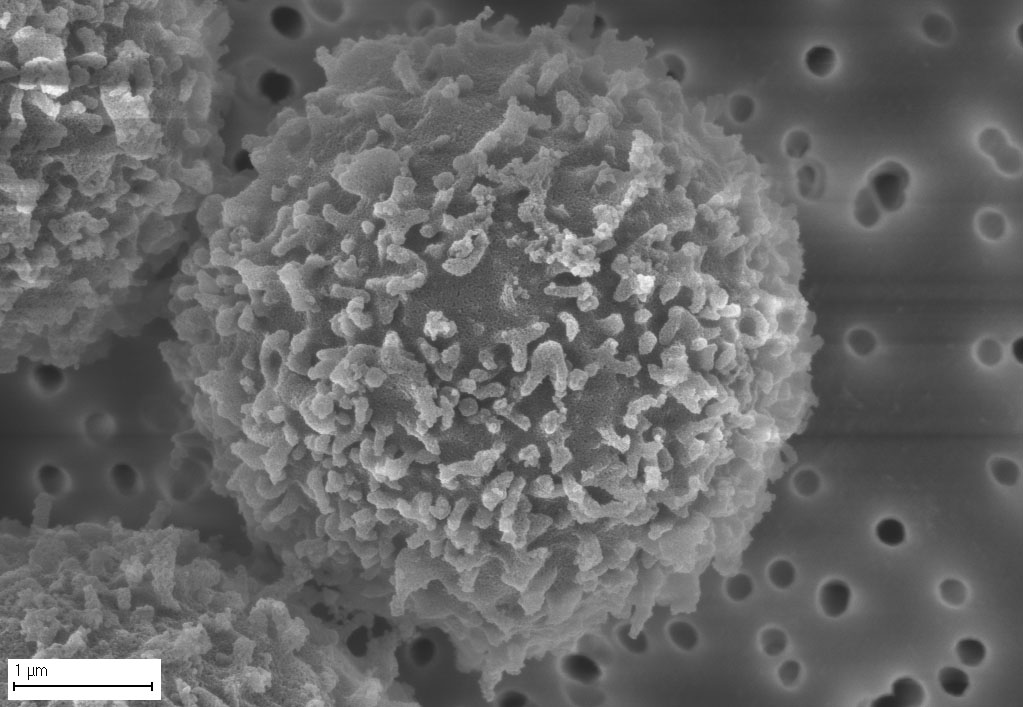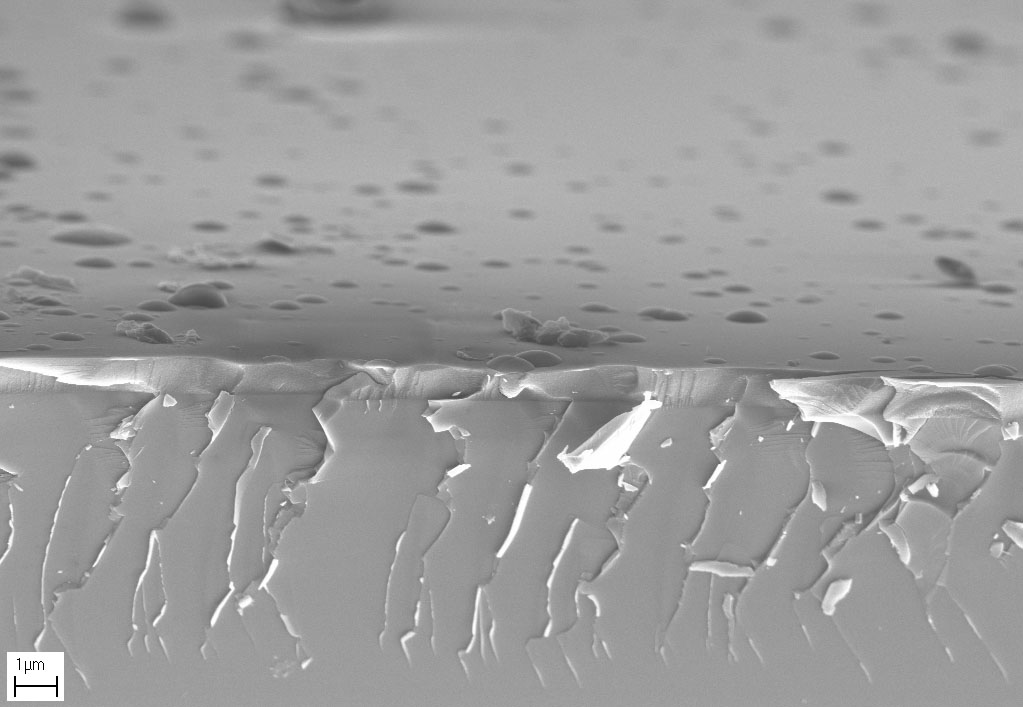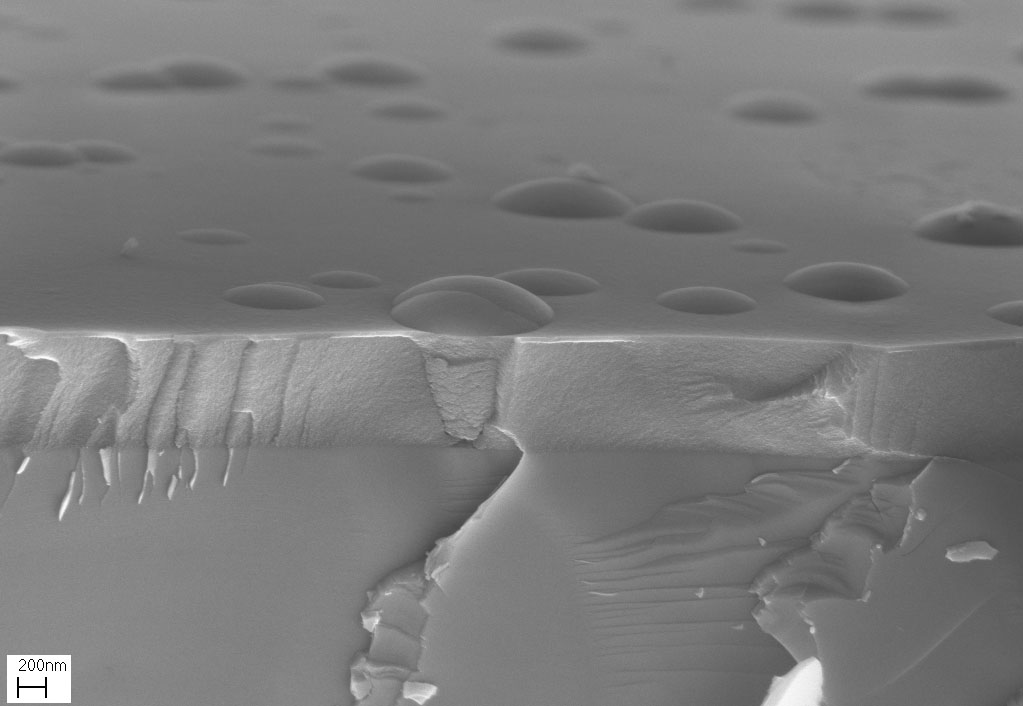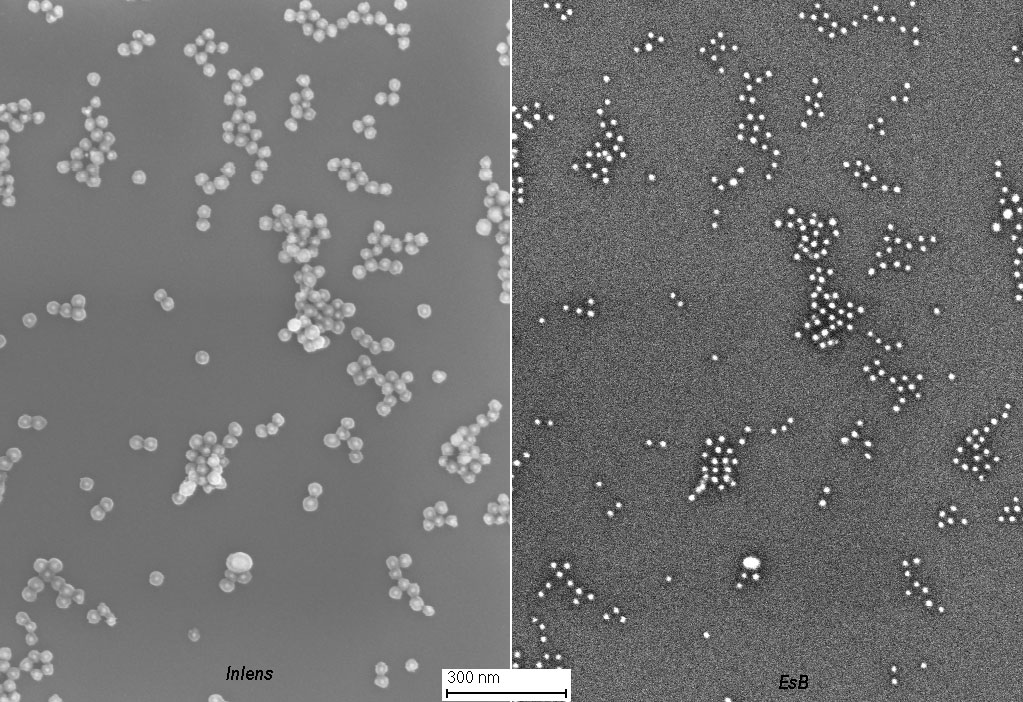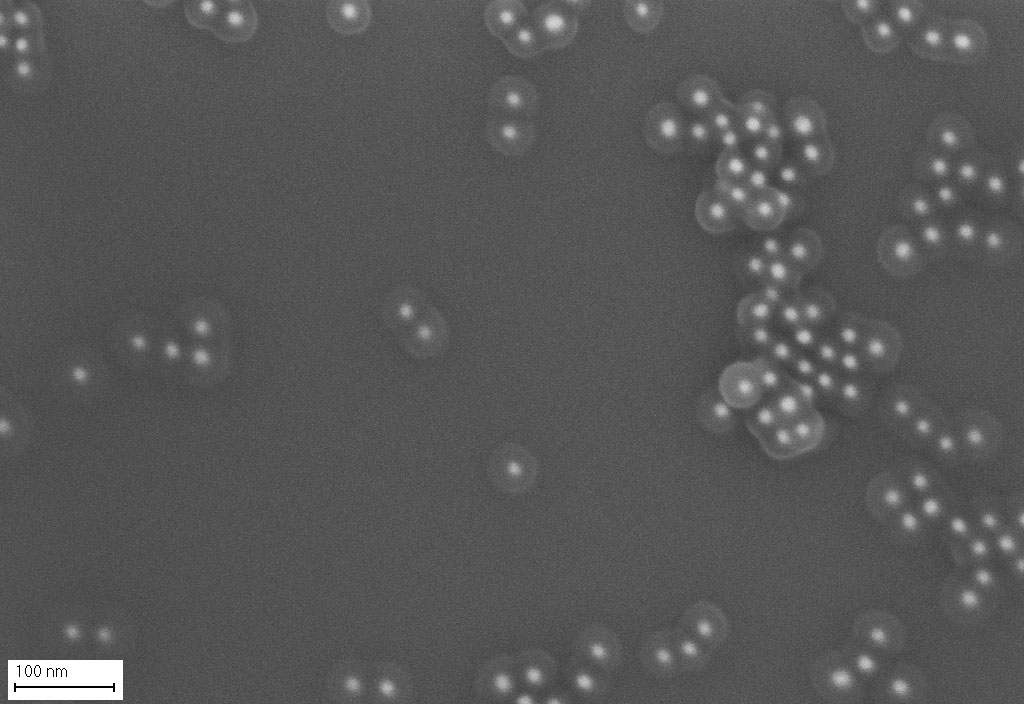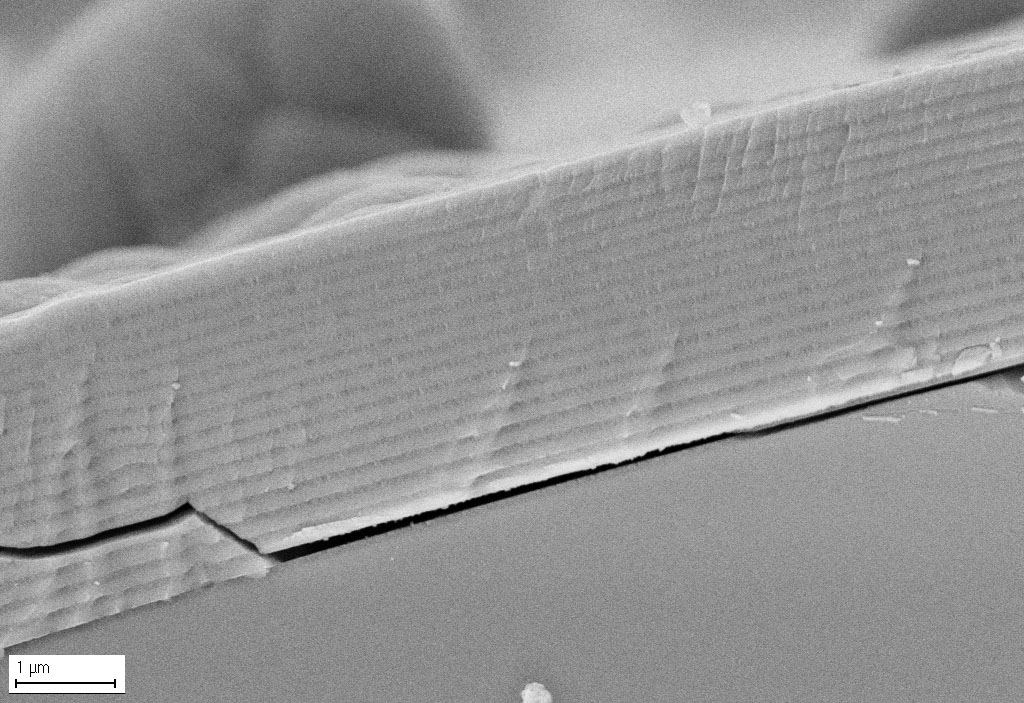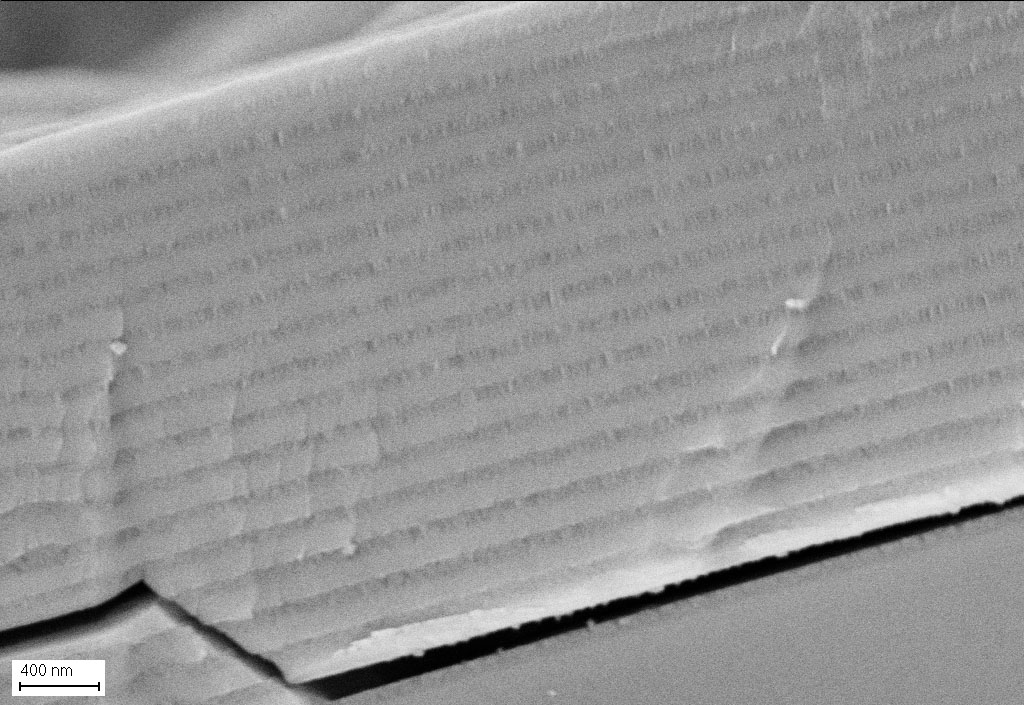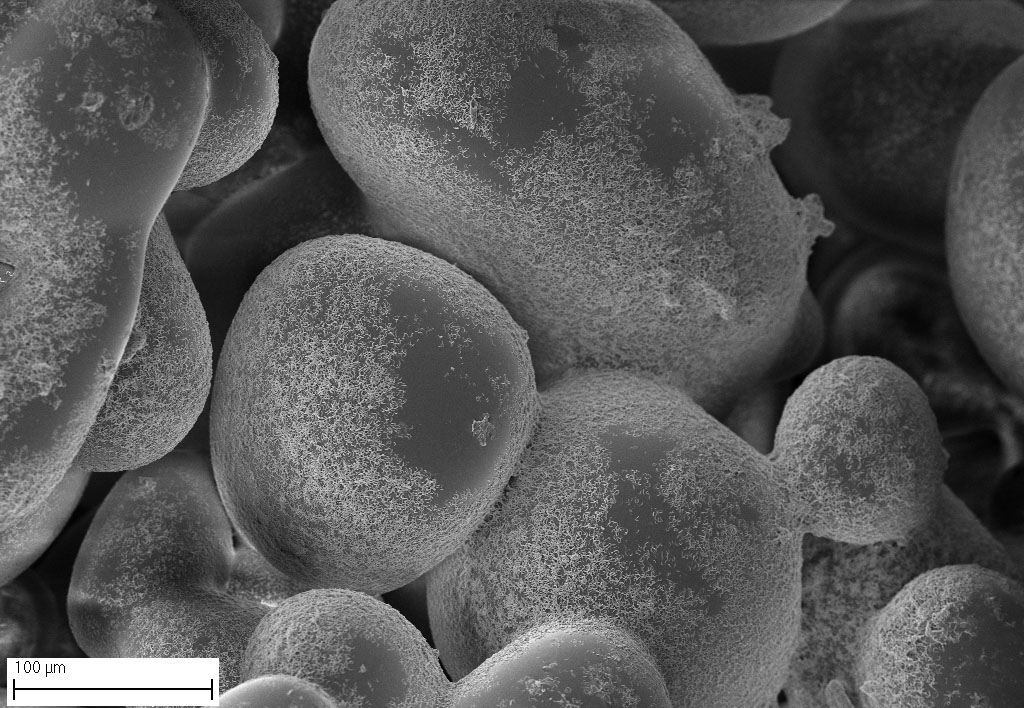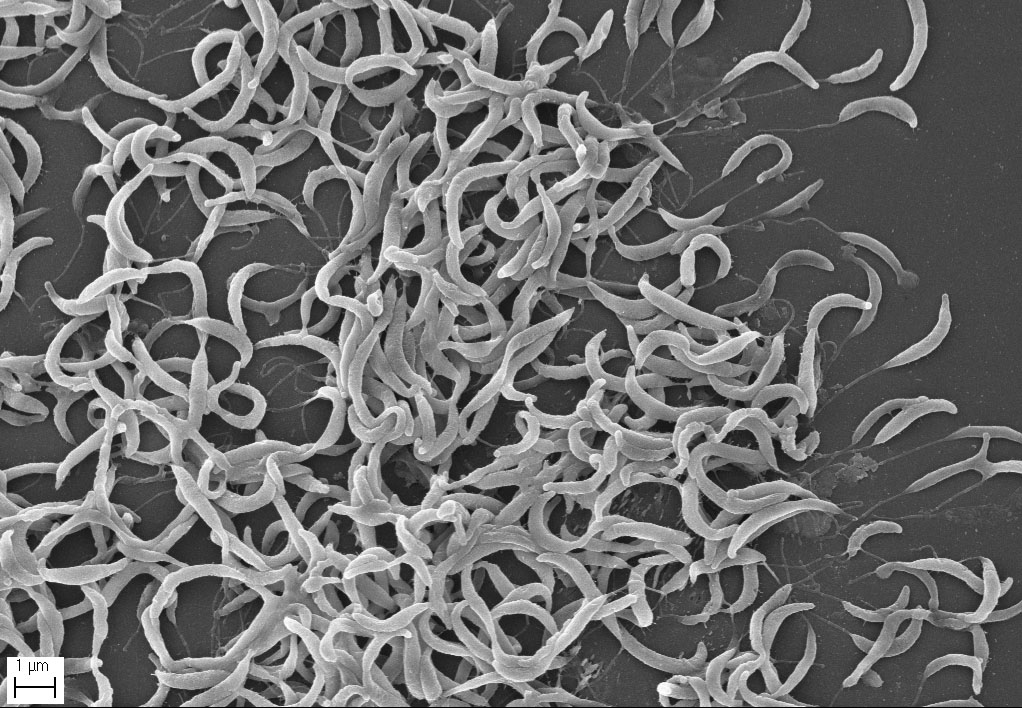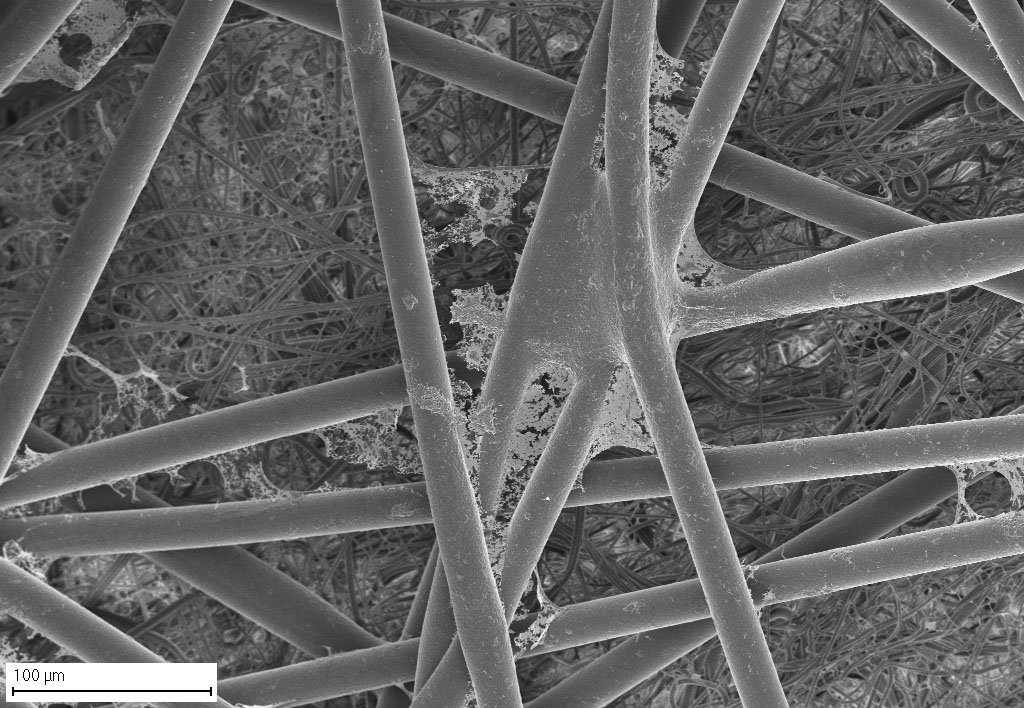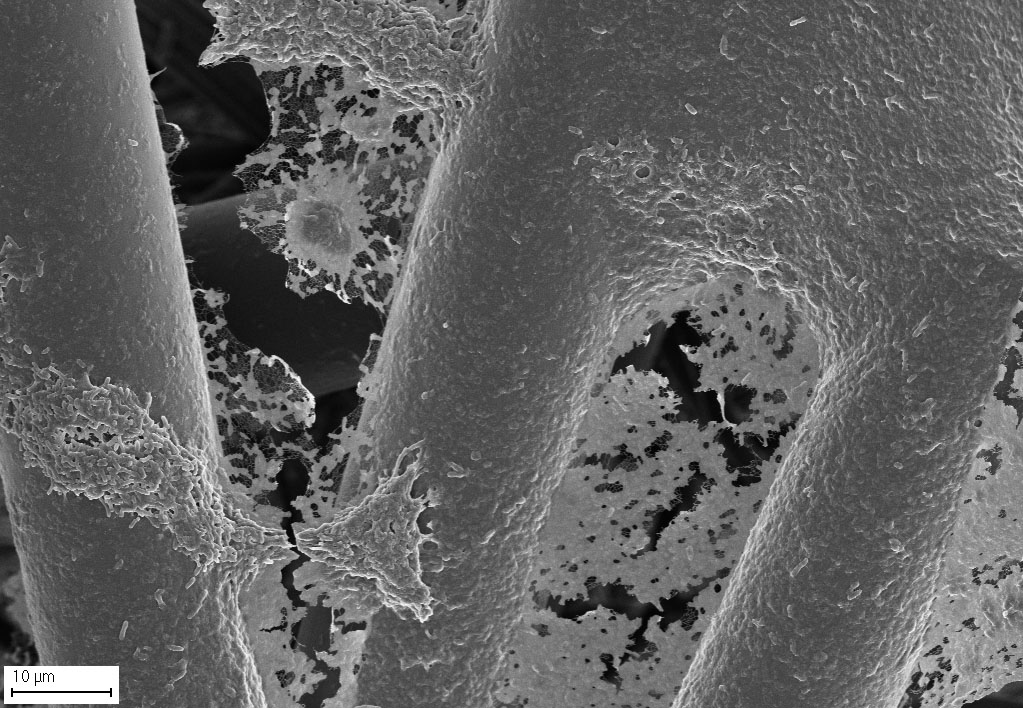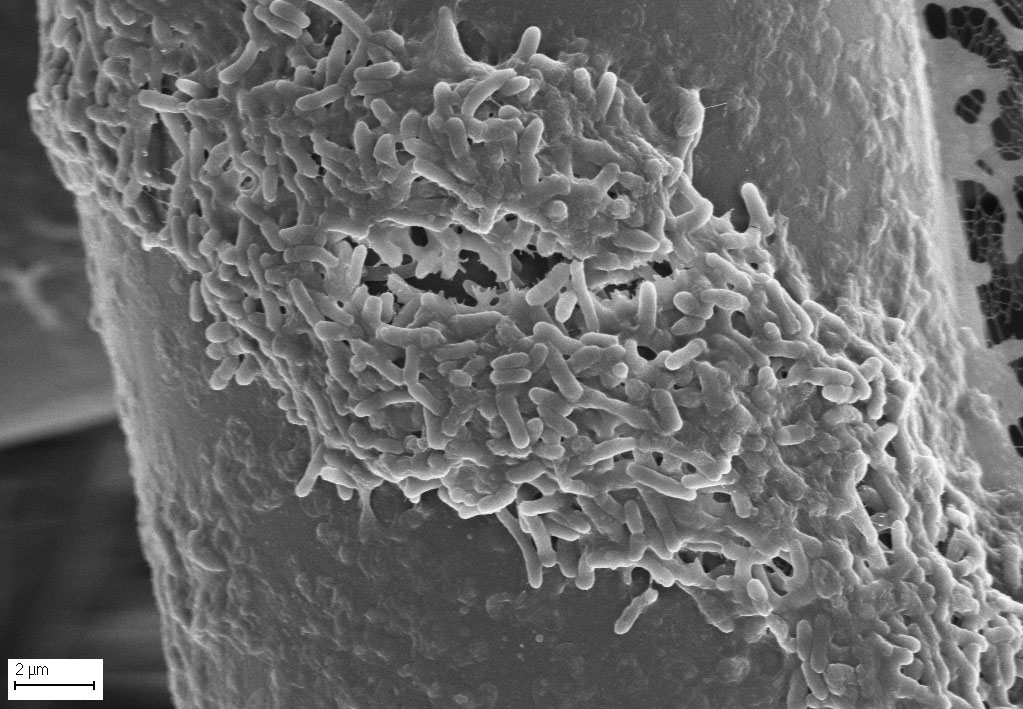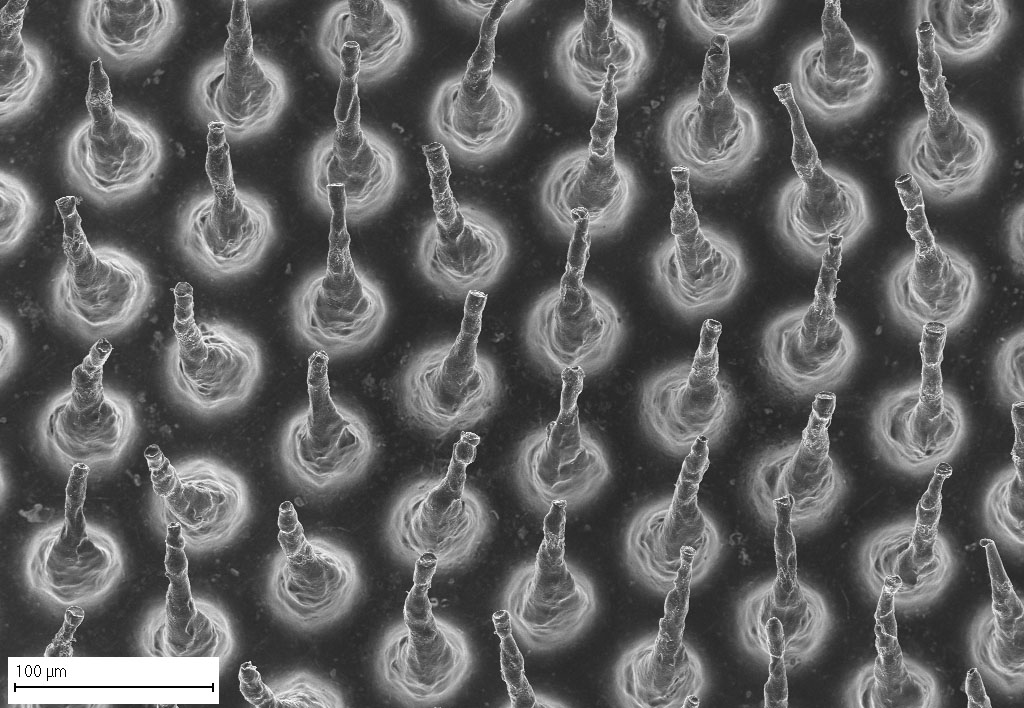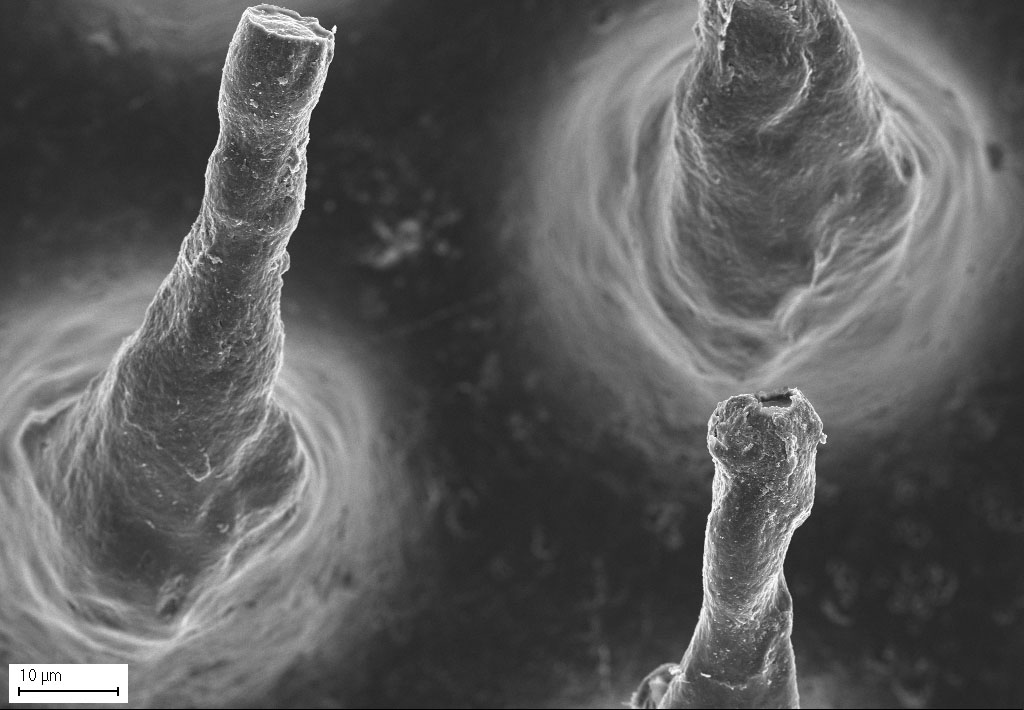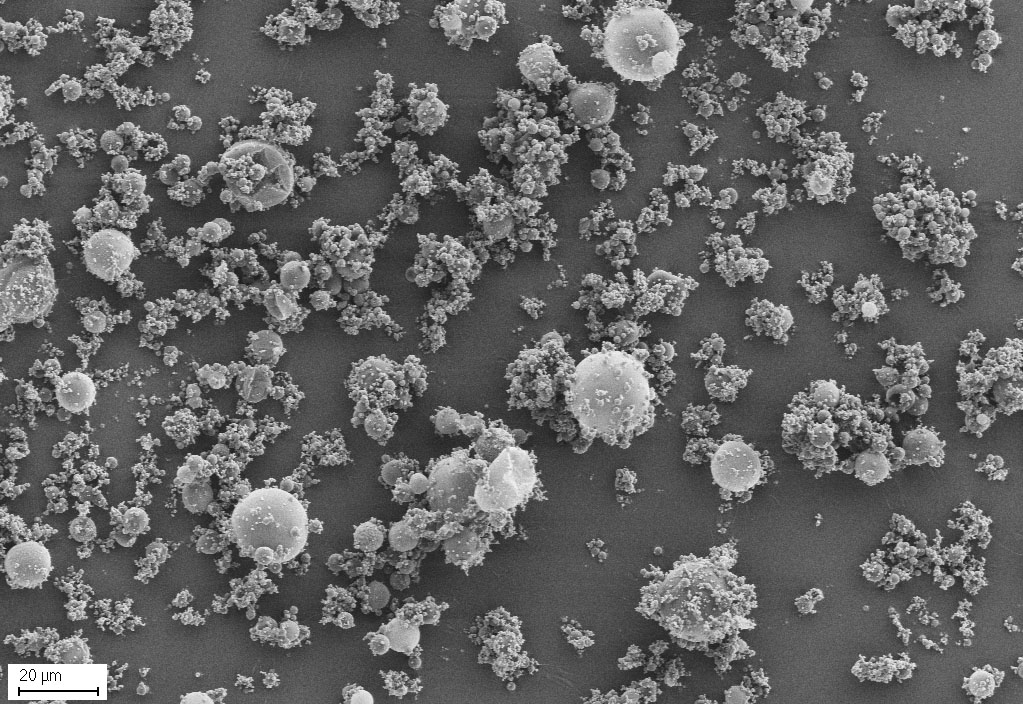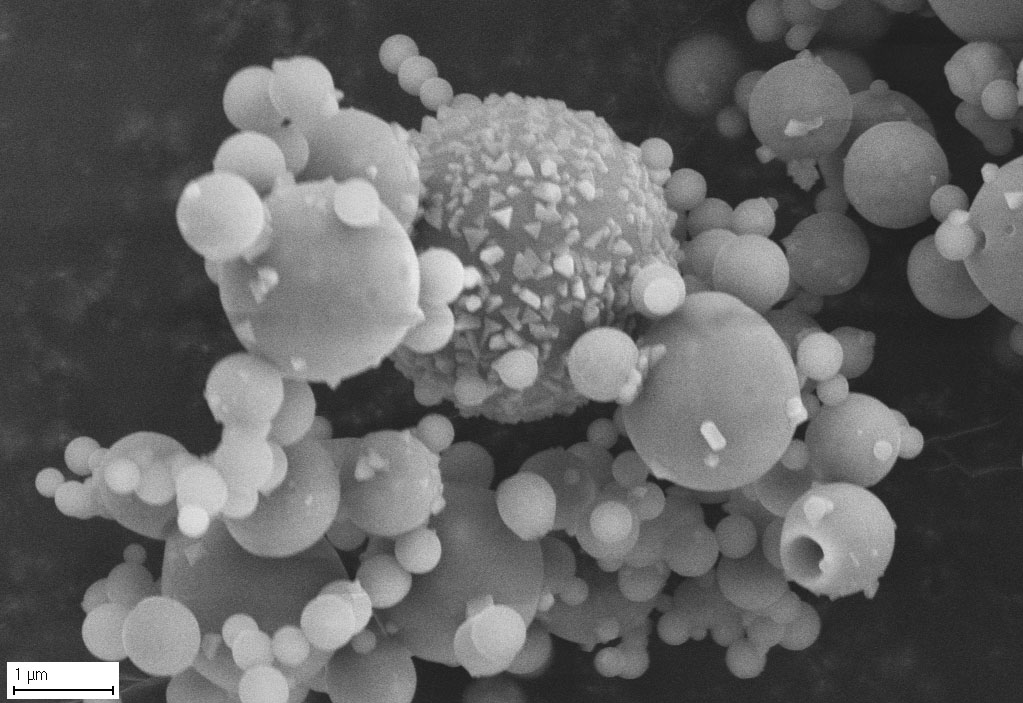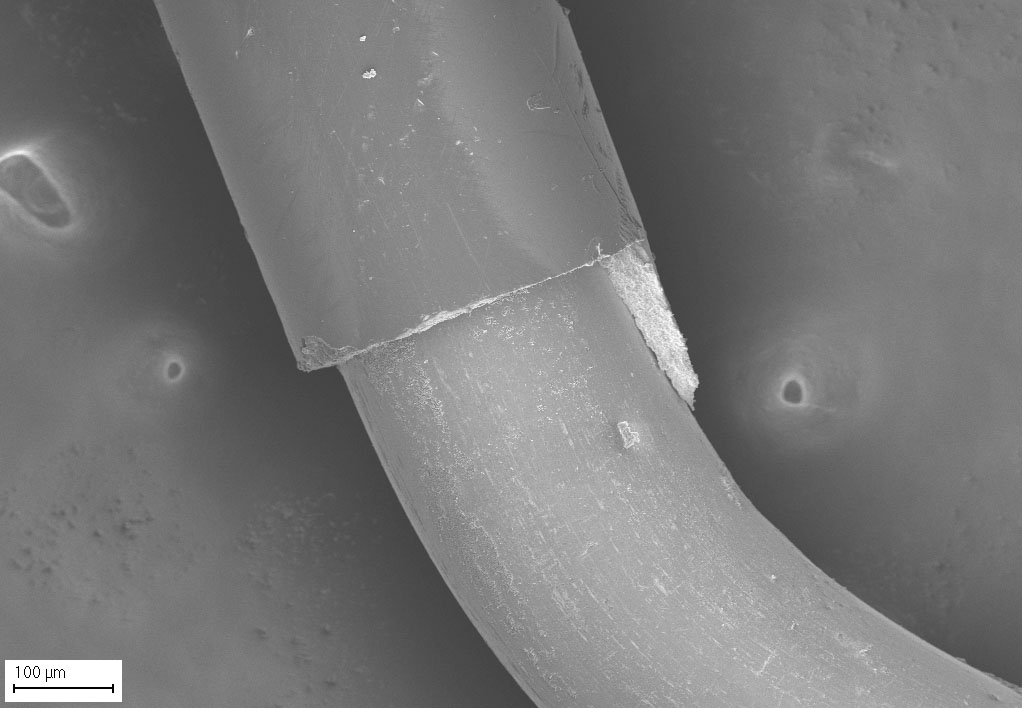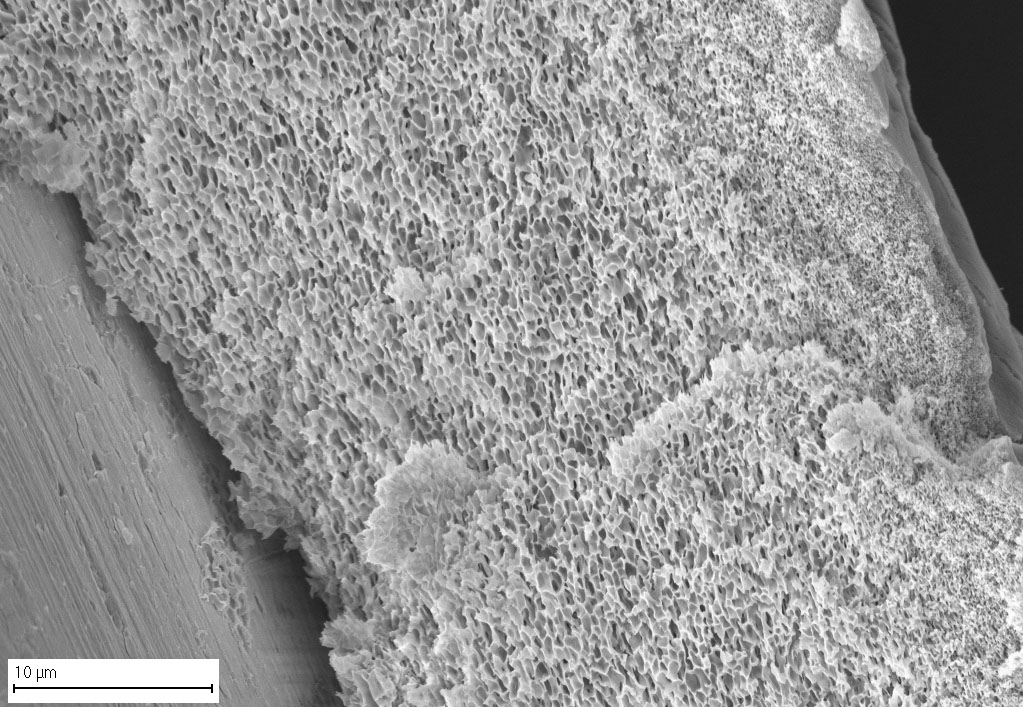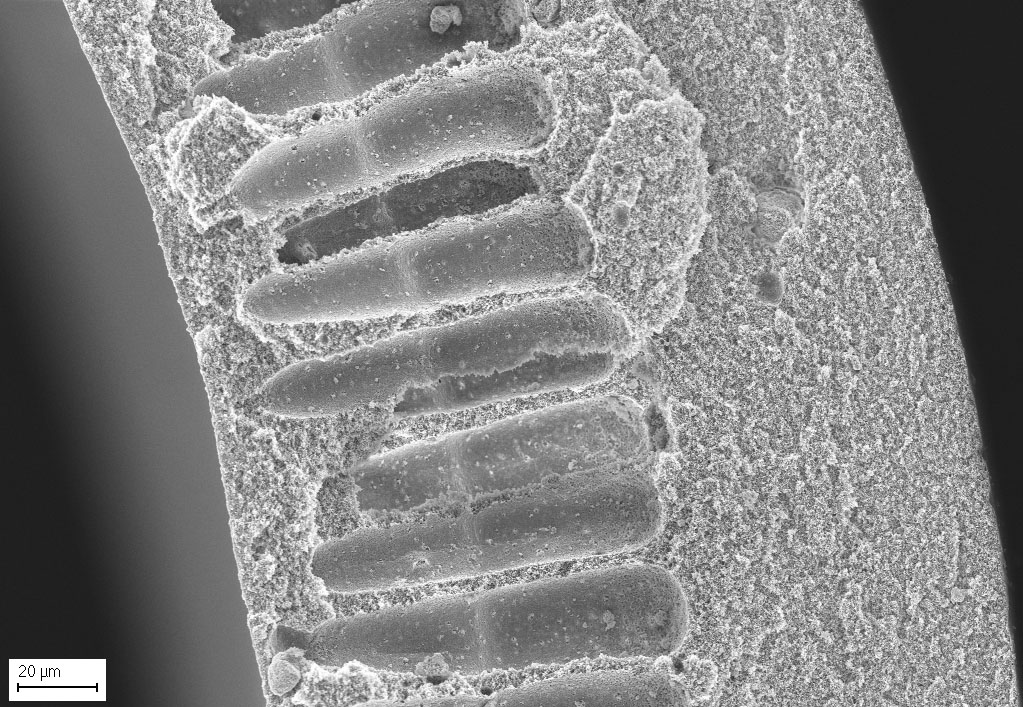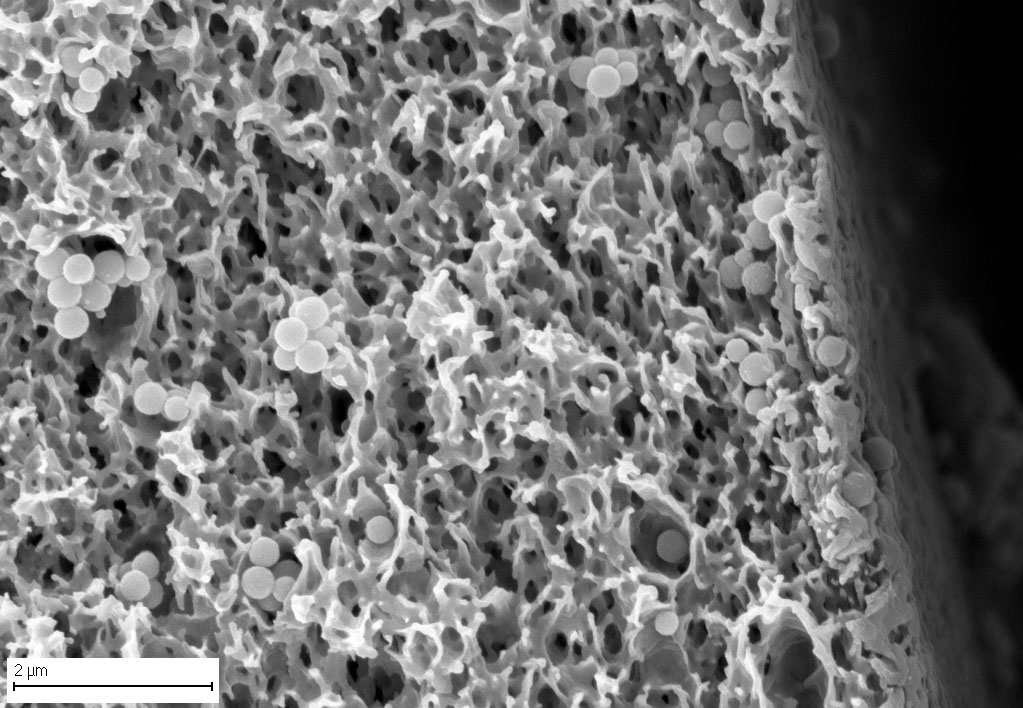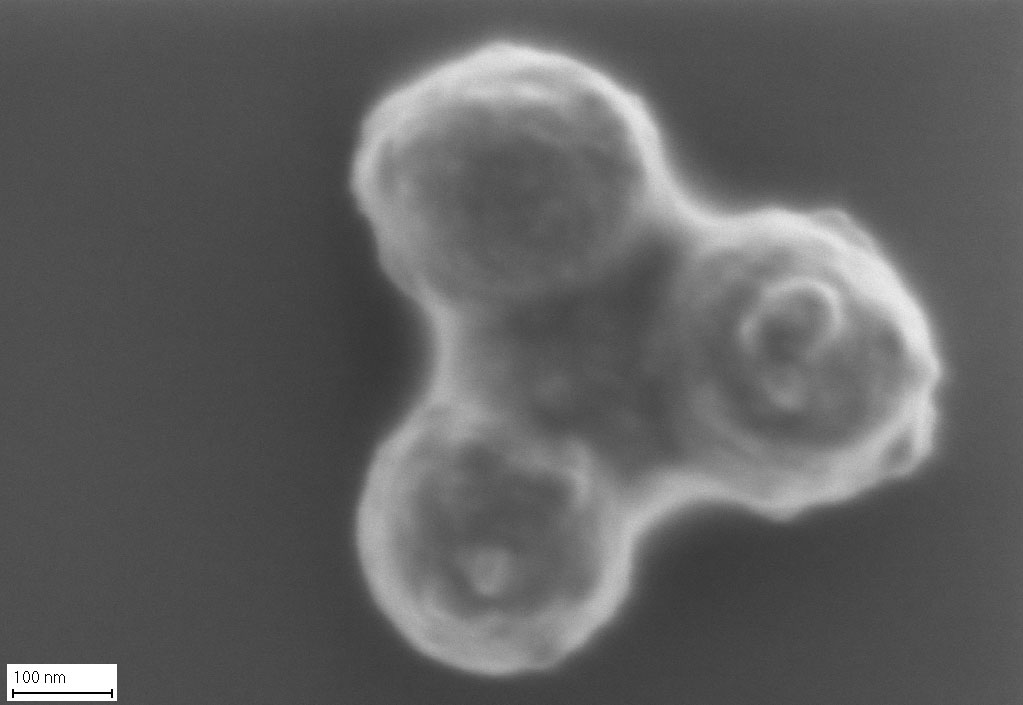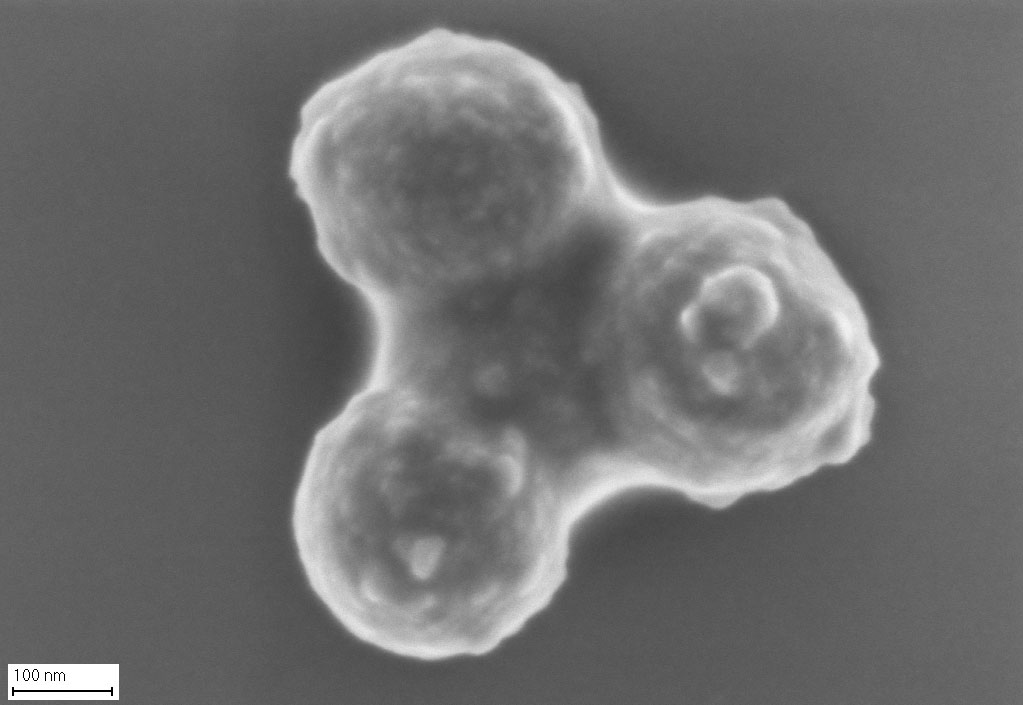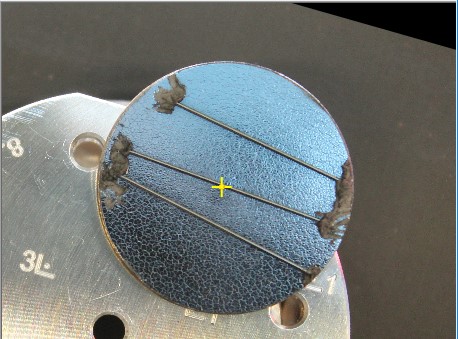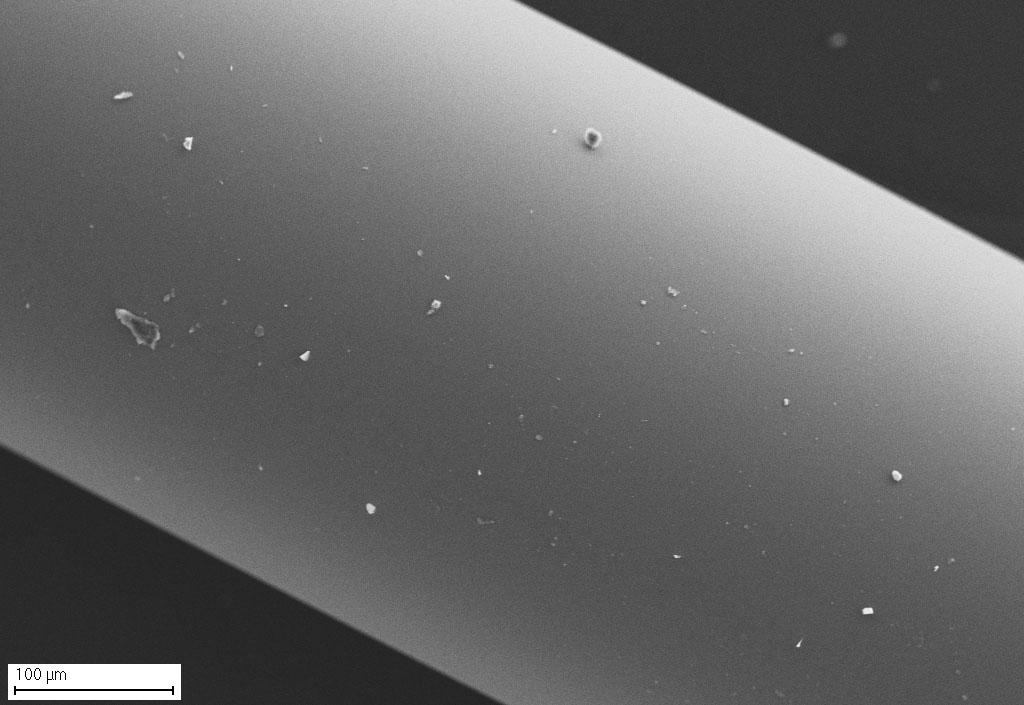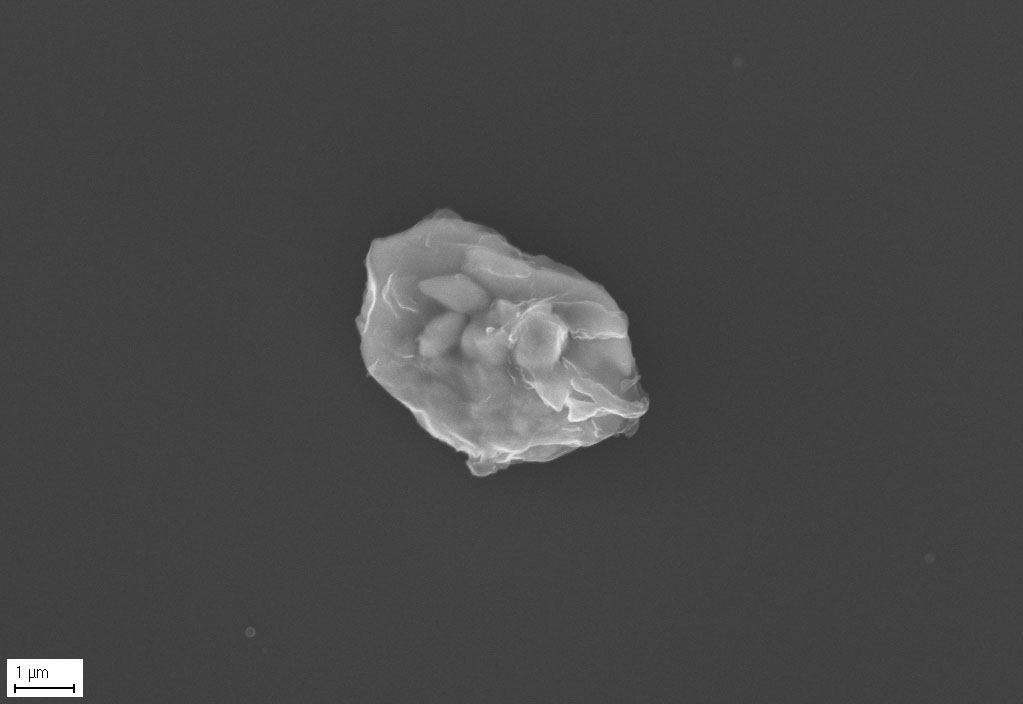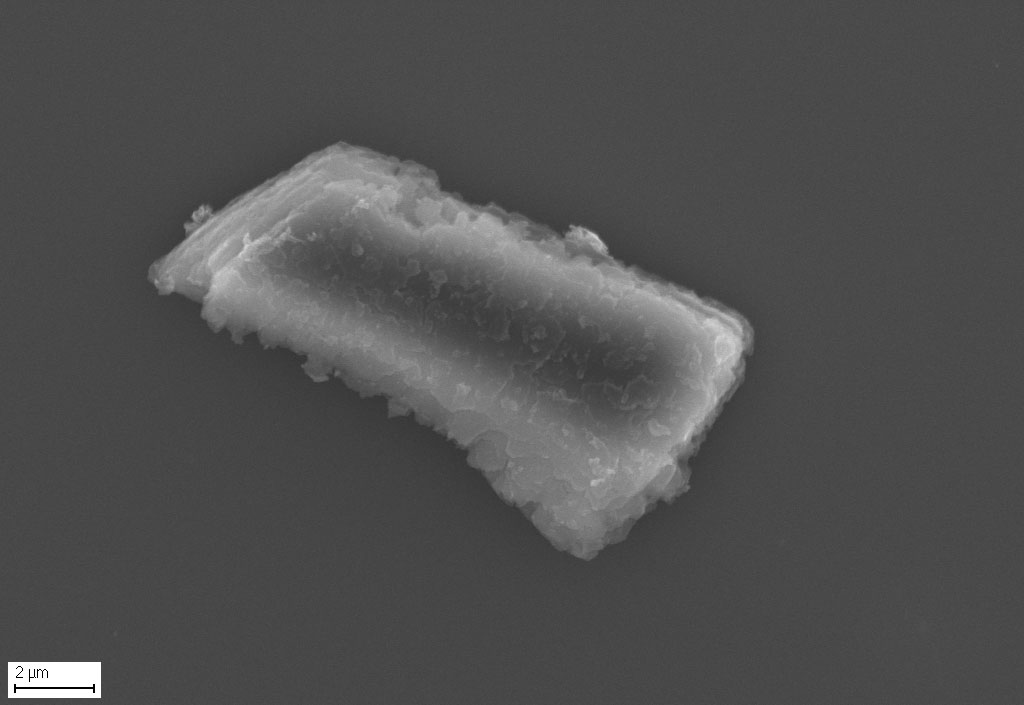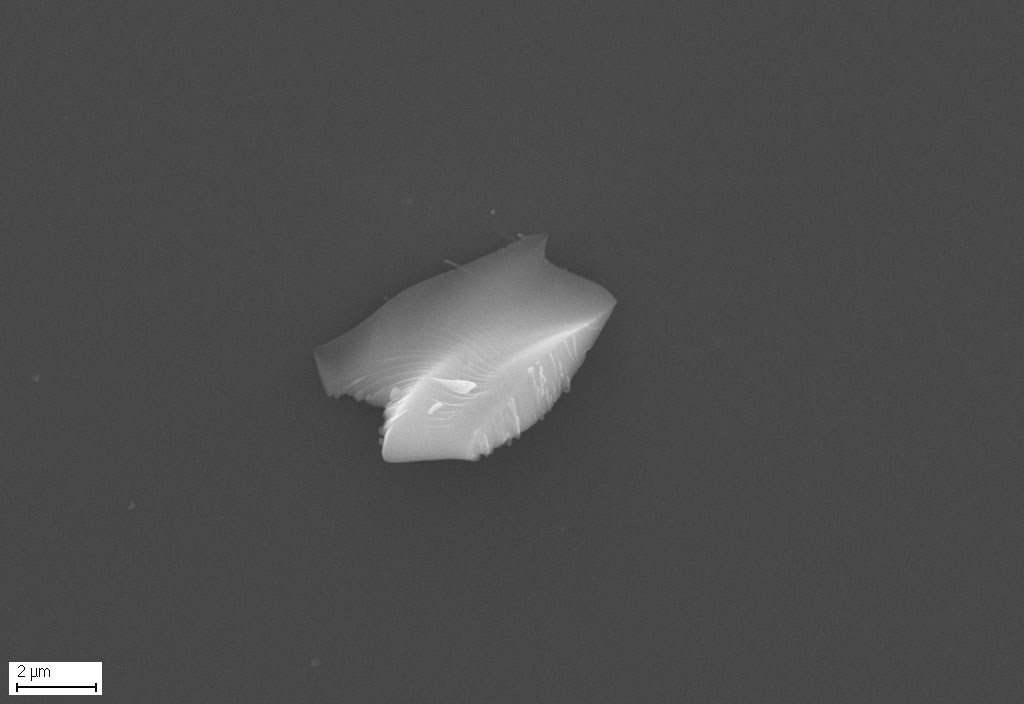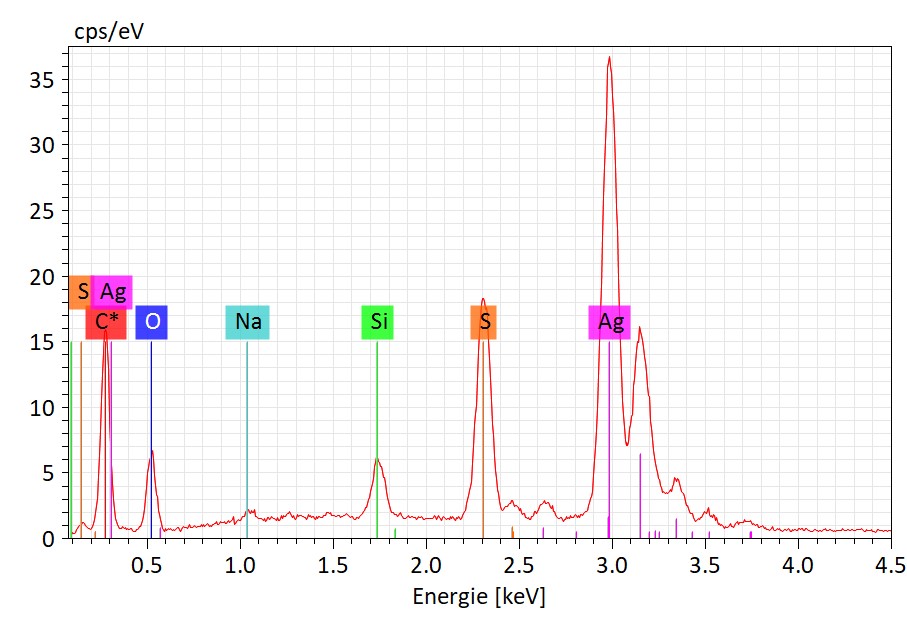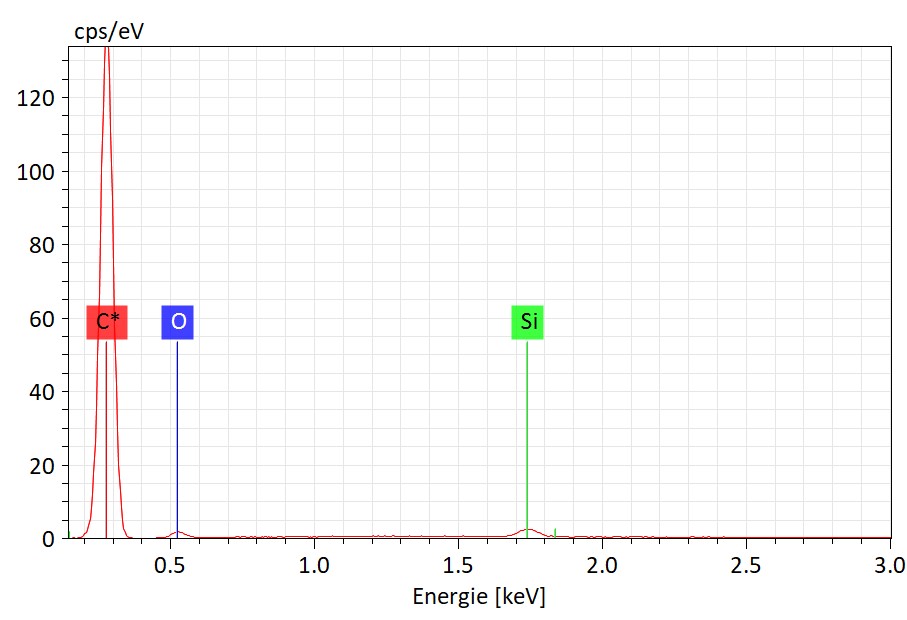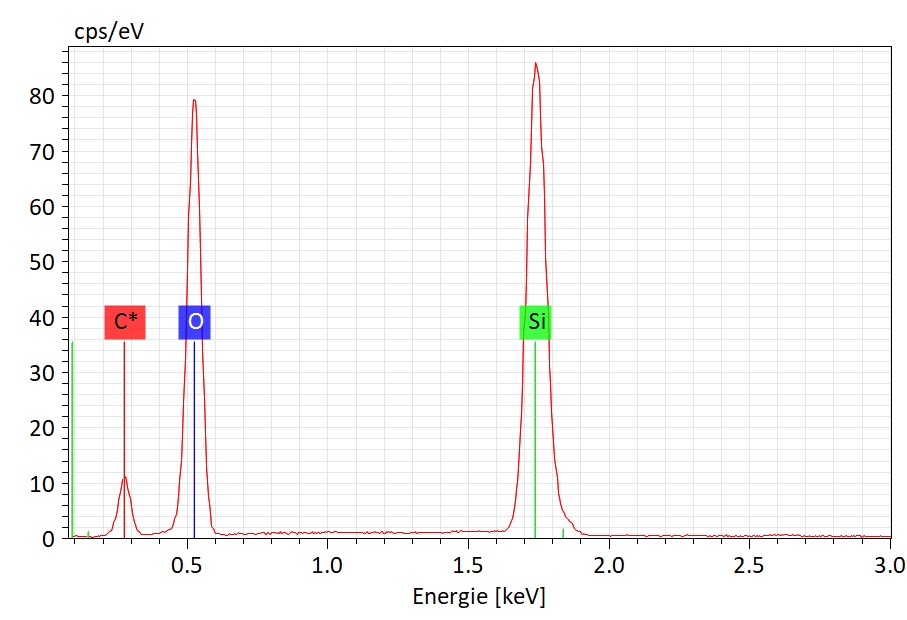By means of scanning electron microscopy, the observation of surface shapes of spatially structured objects is possible over a large magnification range.
With suitable sample preparations, it is feasible to examine surfaces or fracture edges of almost all materials that have vacuum stability.
In interfacial, nanoparticle or membrane analysis, the analysis and visualization of structures in the range of a few nanometers to micrometers provides information and clues about pore and particle size, cracks and roughness, cavities or other special shapes.
The GeminiSEM500 (Fa. Zeiss SMT) available at Fraunhofer IGB is a field emission scanning electron microscope (FE SEM). Additionally, the microscope is suitable for the analysis of radiation-sensitive samples, non-conductive materials as well as to obtain near-surface information on the nature of the sample.
Interaction of the electron beam with the sample produces X-rays that provide information about the chemical elemental composition. Two EDX detectors (XFlash and FlatQuad Fa. Bruker Nano) are installed for this purpose. SEM imaging can be used to locate specific sample sites of interest and to detect even small elemental composition differences in the smallest volumes.
 Fraunhofer Institute for Interfacial Engineering and Biotechnology IGB
Fraunhofer Institute for Interfacial Engineering and Biotechnology IGB